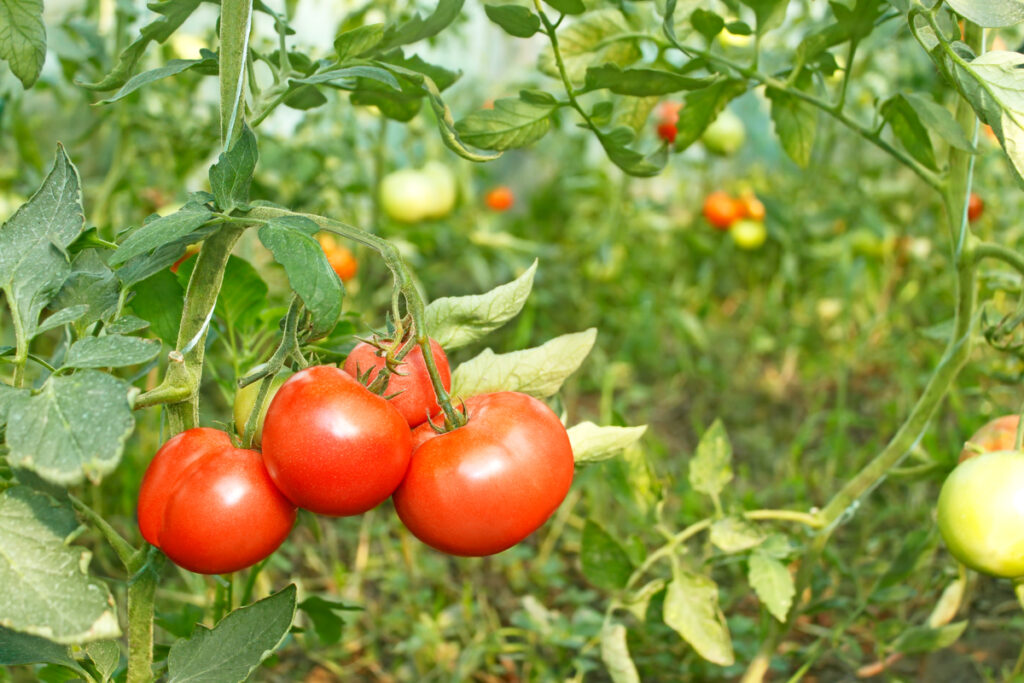As a result of climate change, global food value chain security is increasingly being called into question. According to experts, partial solutions to improve food security include moving some agriculture indoors and into urban areas. Proponents of indoor agriculture note that most cities have vacant high-rise buildings that could be turned into vertical farms. Freelance writer Scott Pruden explains, “Vertical farming’s supporters tout its many benefits — among them, saving arable land and preventing deforestation, cutting agricultural water use, locating food sources in urban centers, and making up for a decline in the number of farmers.”[1] Reducing transportation costs is another benefit of urban agriculture. Researchers at Colorado State University believe that urban agriculture has a future on building rooftops. Journalist Matt Simon reports that, on the top of one the campus’ buildings, CSU researchers have created “a sprawling, sensor-laden outdoor laboratory overseen by horticulturalist Jennifer Bousselot.” On the rooftop, plants are being grown underneath solar panels. Simon writes, “The idea behind rooftop agrivoltaics is to emulate a forest on top of a building. Just as the shade of towering trees protects the undergrowth from sun-stress, so too can solar panels encourage the growth of plants — the overall goal being to grow more food for ballooning urban populations, all while saving water, generating clean energy, and making buildings more energy efficient.” Sounds like a win-win. Of course, not all crops can be grown indoors or on rooftops — nor can urban farming supply all the food urban populations require. Nevertheless, indoor and urban farming sounds like a good idea. As explained below, however, indoor and urban agriculture appears to be in trouble.
The Upsides and Downsides of Indoor and Urban Agriculture
As noted earlier, one of the benefits of indoor and urban farming is utilizing available space to grow food. During the early days of the pandemic, office buildings emptied at an alarming rate and many of them remain underutilized. Empty office buildings are bad for both landlords and cities. Freelance writer Ciara O’Brien reports, with office usage hovering near 50 percent of pre-pandemic levels, some cities are putting the underutilized space to new use growing food.[3] She writes:
“Although the Covid-19 pandemic drove workers out of their offices over three years ago, many office buildings still remain deserted. According to data gathered in 10 major cities, office usage rates just crossed 50 percent of pre-pandemic levels in late January [2023], and these numbers seem to be stalling only a few months later. Nearly 20 percent of office space is empty across the United States, and some projections suggest that more than 300 million square feet of U.S. office space could be obsolete by 2030. … With many folks comfortably working from home offices, many downtown high-rises serve as a looming frustration to landlords but also to local restaurants and small businesses that rely on office commuters to sustain business. So, many municipalities are trying to fill those spaces back up.”
O’Brien goes on to note that some office buildings are being converted into residential properties. She adds, “Although modifying an existing building is less expensive than rebuilding, turning offices into residential space can be costly, as most office spaces are laid out differently from residential buildings. But there are other options for these empty offices — such as farms.”
In addition to converting high rises into farms, other forms of indoor agriculture exist outside of urban environments — such as greenhouses. But indoor farming comes with a higher price tag. Best-selling author William Alexander explains, “Indoor farming has the potential to shake the very nature of agriculture down to its roots. But this innovation comes with higher upfront costs and a larger carbon footprint.”[4] He continues:
“The advantages of controlled agriculture, a technology pioneered in the Netherlands, are many. Crops are not subject to the vagaries of extreme weather, such as frost, heat or hail; they will never be recalled because of E. coli contamination from the dairy farm upstream; and produce can be bred for flavor instead of for tolerance to heat, rain and long-distance transportation. Furthermore, these greenhouses can produce more food with fewer pesticides and less water. With computer-controlled root and air temperatures, nutrients and carbon dioxide levels, these plants are grown in nutrient-laden water rather than soil and provide yields up to 400 times greater per acre than field agriculture, with one-tenth the water used. Controlled agriculture also allows vegetable farms to operate where there is no arable land, whether in Kentucky coal country or an Egyptian desert.”
Although those advantages are significant, Alexander notes that the carbon footprint of indoor agriculture is also significant. He explains, “Studies suggest [greenhouse-grown tomatoes have] about six times the carbon footprint of field tomatoes, even after taking into account the diesel emissions from refrigerated trucks that often transport field vegetables hundreds or even thousands of miles to reach consumers.” As a result, he asks, “In a rapidly warming world, should we be increasing agriculture’s contribution by moving some of it indoors?” The answer, he concludes, is probably yes.
The Future of Indoor Agriculture
With the upsides outnumbering the downsides, one would think the future of indoor agriculture would be bright. Apparently, that’s not the case. Journalist Dale Buss reports, “Only a couple of years ago, indoor agriculture was heralded as a potentially important component of the world’s future food supply, a way to provide locally raised fruits and vegetables in urban areas, a means to reduce the impact of outdoor agriculture on the environment, and an answer for mitigating food safety problems that still plague traditionally grown produce. The long-term promise might still be there for an industry that has scratched out its early existence growing mostly leafy greens, herbs, tomatoes, and strawberries. But the current new reality is that the indoor ag business has fallen rather abruptly into disarray, with some important startups in bankruptcy, major initial investors withdrawing or pulling back on their support, and surging energy costs proving an Achilles’ heel for some prominent business models.”[5]
The bottom line is that indoor agriculture is a business and businesses only succeed if they make a profit. Journalist Adele Peters explains, “Nearly 20 years after the first vertical farm opened, with capital drying up like heads of romaine under an unrelenting California heat wave, one now has to wonder two things: Is it even possible to compete with the economics of outdoor farming? And how did investors think that they could find Silicon Valley-style returns in … lettuce?”[6] One might easily conclude that the death knell for indoor agriculture can be heard across the land. Journalists Melina Walling and Kendria LaFluer report there is life yet to be found in the indoor agricultural sector. They report, “Players in the industry are betting big even as rivals wobble and fail.”[7] Evan Lucas, an associate professor of construction management at Northern Michigan University, told Walling and LaFluer that “he’s not concerned about the shakeout underway. He said some companies may be struggling to scale up, with problems that come from launching in spaces that aren’t necessarily built specifically for indoor farming.” Nevertheless, skeptics right now appear to outnumber proponents of indoor farming.
Concluding Thoughts
As the effects of climate change continue to impact the agricultural sector, I have little doubt that a combination of indoor and outdoor growing will be necessary. Dubai is already home to the world’s largest vertical farm and it uses 95% less water than an outdoor farm requires.[8] Nevertheless, indoor farming will only succeed once its becomes profitable. Currently, the high cost of energy is the main challenge to overcome — and solar panels are probably going to play a major role in overcoming that obstacle. One final observation: Although the CSU experiment is only getting started, widespread use of its techniques could help cities feed their residents and improve their quality of life. As Simon notes, “With rooftop agrivoltaics, you’re essentially bringing the country into the city, a strategy known as rurbanization. The more green spaces we can get into metropolises, the more we can bring down climbing temperatures.” It’s obviously not a silver bullet solution for feeding urban populations, but it does make a lot of sense.
Footnotes
[1] Scott Pruden, “A Delaware vertical farm sees itself as the future of urban agriculture. Can it succeed?” Smart Cities Dive, 26 October 2021.
[2] Matt Simon, “The Ultra-Efficient Farm of the Future Is in the Sky,” Wired, 2 November 2023.
[3] Ciara O’Brien, “Empty Office Buildings Are Being Turned Into Vertical Farms,” Smithsonian Magazine, 11 July 2023.
[4] William Alexander, “Indoor Farming Is a ‘No-Brainer.’ Except for the Carbon Footprint.” The New York Times, 21 June 2022.
[5] Dale Buss, “Hard Times for Indoor Agriculture,” IFT, 26 October 2023.
[6] Adele Peters, “The vertical farming bubble is finally popping,” Fast Company, 27 February 2023.
[7] Melina Walling and Kendria LaFluer, “Lots of indoor farms are shutting down as their businesses struggle. So why are more being built?,” AP, 17 September 2023.
[8] Deniz Yildiran, “The world’s largest vertical farm using 95% less water opens in Dubai,” Interesting Engineering, 19 July 2022.





